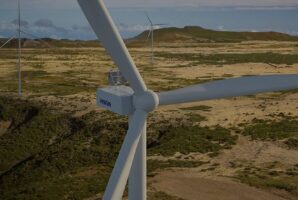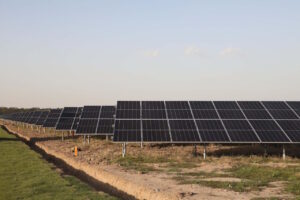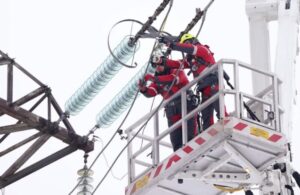Major gas supplier Jemena has called for the creation of a dedicated ‘renewable gas target’, saying that it could provide a critical investment signal that would help decarbonise the gas sector.
In an address to an energy conference on Tuesday, Jemena managing director Frank Tudor said a dedicated renewable gas target – similar to the renewable energy target that is now winding down – would underpin investment in and production of zero emissions gas, such as green hydrogen.
“This is the jump-start the gas sector needs to truly commercialise zero-emission gases such as hydrogen and biomethane and make them available to Australian homes and businesses at scale,” Tudor said.
Gas companies like Jemena face significant transitional risk from the push towards zero emissions, and are keen to find ways to utilise and preserve their existing gas infrastructure, and avoid the risk of gas networks becoming stranded assets – as has already been recognised by the regulator.
“By decarbonising our existing gas infrastructure, we can avoid unnecessarily building new alternative forms of energy infrastructure, which will have a significant impact on customer bills,” Tudor added.
“In the short-term, this will make the transition to a low-carbon future seamless and means Australian homes and businesses can continue to use their gas stoves, heaters, and other appliances.”
Unlike electricity network infrastructure, which operates much the same way regardless of whether they are used to transmit fossil fuel or renewable electricity, not all gas networks can be used to transport alternative fuels, such as renewable hydrogen.
There are limits to the amount of fossil gas, which mostly consists of methane, that can be replaced with renewable hydrogen due to the different physical characteristics of hydrogen gas.
As a significantly lighter gas that burns much faster than conventional methane gas, hydrogen requires specially designed appliances and network infrastructure and is often incompatible with existing gas networks.
Jemena is amongst a number of companies currently trailing the blending of hydrogen gas with conventional fossil gas supplies. However, such blends are generally limited to just a ten per cent mix of hydrogen due to the technical limitations.
Some jurisdictions, in particular the ACT, have started to stop the roll out of new gas infrastructure into new residential and business developments, saying that it makes more financial sense to electrify all energy use – which can then be powered by supplies of renewable electricity – rather than attempt to switch gas supplies to a new zero emissions source of gas.
However, the Tudor argued the creation of a dedicated Renewable Gas Target could help support gas companies invest in alternative forms of energy infrastructure and would allow the gas industry to contribute to a wider decarbonisation of the energy system as the technology develops.
“We believe a Renewable Gas Target could see up to nine petajoules of zero-carbon gas injected into Jemena’s New South Wales gas distribution network by 2030,” Tudor said.
“This would remove around 464,000 tonnes of carbon from the atmosphere each year, the equivalent of over 200,000 cars, and help New South Wales achieve a ten per cent renewable gas target. Our initial analysis has found that this can be done at an estimated cost of around $15 for a typical NSW household.”
Tudor said that such a target could be modelled on the federal Renewable Energy Target, which since its creation in the early 2000s has helped to support investment in renewable electricity supplies, including rooftop solar and large-scale wind and solar projects.
“A Renewable Gas Target will also give confidence to those hard to abate sectors – such as the manufacturing sector – which rely on gas as a fuel stock, that they will be able to continue operating in Australia while decarbonising their supply chains,” Tudor added.
“Renewable gases can also be used in the transport sector, particularly by larger vehicles such as buses and haulage vehicles. At the same time, we believe renewable gas will also provide firming power to intermittent renewable generation, particularly as hydrogen-fuelled power stations are developed.”










